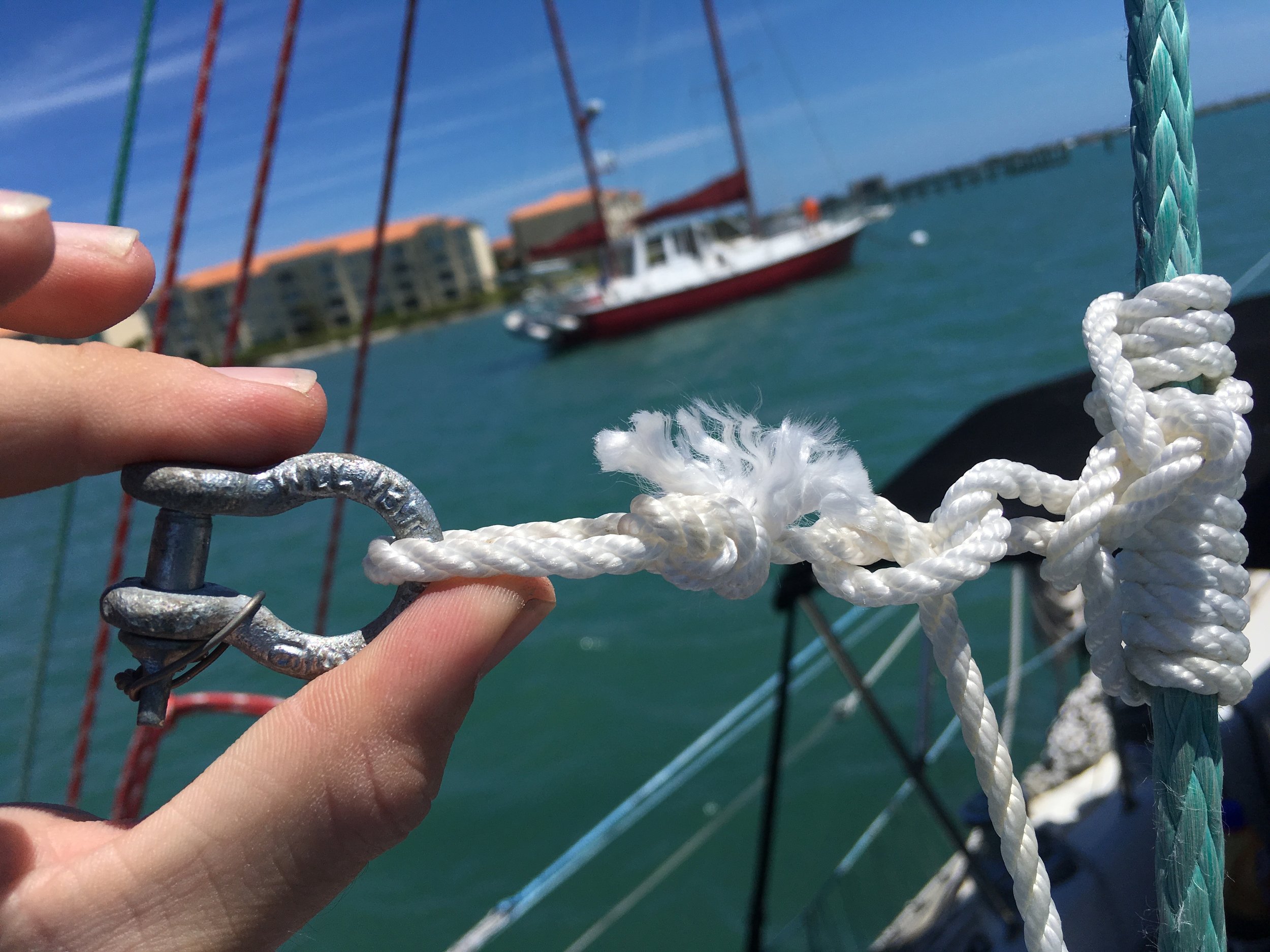All you need to do is picture the toerail as a cleat, and begin from there. Now, the end that runs towards our dinghy painter is coming off the wrong side (the current switched and winds didn't) but I'm sure you won't make that same mistake.
Simply lead the line through the toerail and back along the side of the toerail just like you would make the first pass on a cleat. Then instead of going under the horns, you simply pass the line through the perforations in the toerail. The last step is a bit different, as you don't twist and slip over the horn, instead you have to pass the bitter end through the knot.
If you picture it as tying a clove hitch on your toerail, you will easily and securely be able to attach any line at any point of your vessel.







